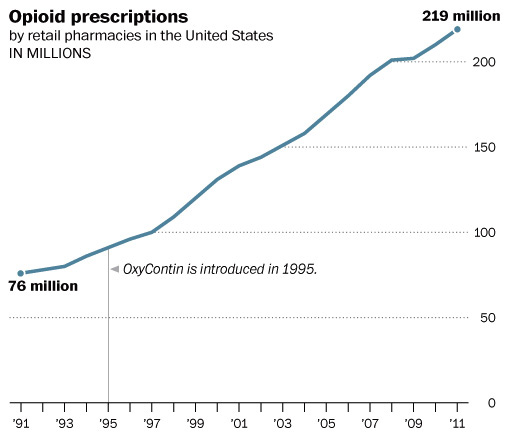Seven Independent Investigations give FDA a Failing Grade
FDA’s preeminent authority to determine whether a drug or device is approved is its assumed scientific expertise and honest, independent review of safety and performance data from scientifically valid, controlled clinical trials.
However, surveys of FDA scientists and numerous independent investigations by highly credible entities have all confirmed serious deficiencies in FDA’s scientific base and organizational structure that severely undermine its ability to fulfill its mission:
"protecting the public health by assuring the safety and efficacy, of drugs, biological products, medical devices, and our nation’s food supply" and "helping the public get accurate, science-based information they need to use medicines and foods to improve their health."
FDA’s reviewing process is no longer governed by scientific evidence: the process has been corrupted under the influence of commercial expediency, which has led to the approval of an ever increasing number of unsafe, harmful drugs, vaccines and devices. FDA adheres to an irrational–95%– certainty standard before recognizing a lethal risk. How many
FDA managers routinely overrule FDA’s own scientists’ objections to approval of products when they detect serious safety hazards. To ensure approvals, FDA stacks its advisory committees with members who have a financial conflict of interest. And FDA delays taking action (often for years) after toxic drugs and defective devices caused immeasurable harm. These actions demonstrate that public safety is clearly not a priority for FDA’s decision makers whose intervention on behalf of manufacturers resulted hundreds of thousands of preventable deaths.
1. The Institute of Medicine Report (2006). “The Future of Drug Safety: Promoting and Protecting the Health of the Public”
- There is a perception of crisis has compromised the credibility of FDA and of the pharmaceutical industry.
- The drug safety system is impaired by serious resource constraints that weaken the quality and quantity of the science that is brought to bear on drug safety
- An organizational culture in CDER that is not functional
- Unclear and insufficient regulatory authorities particularly with respect to enforcement.
- FDA and the pharmaceutical industry do not demonstrate accountability and transparency to the public by communicating safety concerns in a timely and effective fashion
2. FDA’s own commissioned Science Board Report , prepared by the Subcommittee on Science and Technology, FDA Science and Mission Risk (2007)
Science Board Report flatly stated: “FDA cannot fulfill its mission because”:
- Its scientific base has eroded and its scientific organizational structure is weak
- Its scientific workforce does not have sufficient capacity and capability for risk assessment
- FDA’s science agenda lacks a coherent structure and vision, as well as effective coordination and prioritization
- Its information technology (IT) infrastructure is inadequate.
3.General Accounting Office (2009). "FDA Faces Challenges Meeting Its Growing Medical Product Responsibilities and Should Develop Complete Estimates of Its Resource Needs," GAO-09-581 June, 2009.
“Total funding increased from about $562 million in fiscal year 1999 to about $1.2 billion in fiscal year 2008, with user fee funding accounting for more than half of this increase. A large and growing portion of funding supported activities for which user fees are collected, resulting in a declining share of funding available for other activities.”
4. General Accounting Office New Drug Approval: FDA Needs to Enhance Its Oversight of Drugs Approved on the Basis of Surrogate Endpoints,
GAO-09-866 September 23, 2009
Weaknesses in FDA’s monitoring and enforcement process hamper its ability to effectively oversee postmarketing studies. FDA has not routinely been reviewing sponsors’ annual submissions on the status of studies in a timely manner. It has little in the way of readily accessible, comprehensive data to monitor studies’ progression and does not consider such oversight a priority.
5. Institute of Medicine Report. Medical Devices and the Public Health: The FDA-510K Clearance Process at 35 Years, July, 2011
The IOM report confirms the need to restructure the review / approval process for medical devices. “The committee concludes that the 510(k) process lacks the legal basis to be a reliable premarket screen of the safety and effectiveness of moderate-risk devices and, furthermore, that it cannot be transformed into one.” The IOM called for an “integrated premarket and postmarket regulatory framework that provides a reasonable assurance of safety and effectiveness throughout the device life cycle.”
6. Consumer Reports "Dangerous Medicall Devices," a recent investigation (May 2012) " revealed that “rarely” are medical devices tested before they are implanted in patients.
- “For most implants and other high-risk devices brought to market, manufacturers do nothing more than file some paperwork and pay the Food and Drug Administration a user fee of roughly $4,000 to start selling a product that can rack up many millions of dollars in revenue.”
7. General Accounting Office. Information Technology: FDA Needs to Fully Implement Key Management Practices to Lessen Modernization Risks .
GAO Report. GAO-12-236. March 2012.
FDA’s regulatory program includes premarket reviews of drug and medical products; inspections of manufacturers; and postmarket surveillance of food, drug, and medical products.
Information technology (IT) systems are critical to the agency’s product review, adverse event reporting, and compliance activities. However, reports on the agency’s IT that we, FDA’s Science Board, and others have previously issued noted limitations in a number of key areas, including data availability and quality, the reliability and redundancy of the agency’s infrastructure, and its ability to use technology to improve regulatory effectiveness.
- FDA Lacks a comprehensive list of its IT (Information Technology) systems
- FDA has not implemented key management capabilities
- FDA Has Not Developed an Integrated Master Schedule for MARCS to Effectively Gauge Progress
- FDA Has Not Fully Established Key IT Management Capabilities Needed to Guide Its Modernization Efforts
- FDA does not have an actionable IT strategic plan to guide its modernization efforts
- FDA Has Not Planned Adequately for Its IT Human Capital Needs
- FDA Has Made Mixed Progress in More Effectively Sharing and Integrating Data

